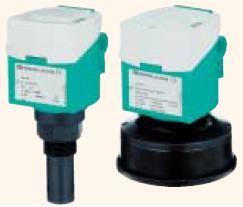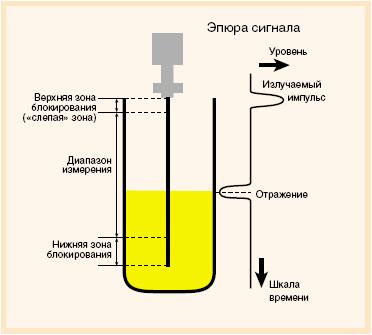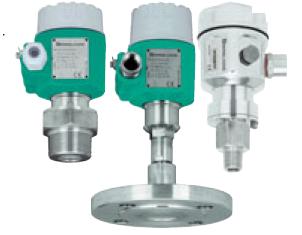
An international exhibition of oil and gas industry was held recently in Almaty. ITC-Electronics, a recognized leader among suppliers of electronic components and automation devices, has been taking part in such events for a number of years. Last year ITC-Electronics took part in KITEL exhibition, and this year made an impressive appearance at KIOGE Exhibition.
Many visitors to the exhibition were very much interested in the ITC-Electronics exhibit. They appreciated the opportunity to receive a technical consultation of company specialists and browse manufacturers’ catalogs. Many project solutions were approved right there on the spot.
ITC-Electronics is an exclusive supplier of Pepperl+Fuchs products for Kazakhstan. This status allows to offer beneficial and comfortable conditions for cooperation. Therefore, the presence of the Pepperl+Fuchs representative at the stand of ITC-Electronics attracted the attention of visitors. Seminars and technical consultations were provided. Since most of the visitors were impressed with level-measuring equipment by Pepperl+Fuchs, in this article we decided to tell you in more detail about level sensors made by this company.
Level-measuring sensors
![348424$[250x0].jpg 348424$[250x0].jpg](/upload/medialibrary/1a3/348424$[250x0].jpg)
Fast development of Kazakhstan’s oil sector brings with it use of cutting-edge technologies, increased requirements for equipment and staff qualification, stricter quality control measures. In our time it is very difficult to control the technological process without special equipment for measuring levels. Pepperl+Fuchs is an internationally famous manufacturer of the equipment necessary for these processes. Hardly any other company can offer a more impressive array of level sensors, intrinsically safe barriers and systems of remote input and output, sensors in explosion-proof casings, identification devices and much more.
The LUC ultrasonic sensors are universal and intended for continuous measurement of levels of liquids, pastes and large grain free-flowing substances. The level of liquid is determined by subtracting the distance from the level sensor to the surface of the liquid from the total depth of the container. This distance is assessed by the time it takes for the ultrasonic signal from the sensor to reach the liquid and reflect back to the sensor. The advantages of the sensor include its compactness and simplicity in installation. The sensor is resistant to chemically aggressive, abrasive and adhesive substances. Chemical and physical properties of the substance do not affect measurement results.
This series has four devices:
- LUC-M10
- LUC-M20
- LUC-M30
- LUC-M40
Main characteristics:
- Maximum depth of measurement for LUC-M10: 5 m for liquids, 2 m for free-flowing substances;
- Maximum depth of measurement for LUC-M20: 8 m for liquids, 3.5 m for free-flowing substances;
- Maximum depth of measurement for LUC-M30: 15 m for liquids, 7 m for free-flowing substances;
- Maximum depth of measurement for LUC-M40: 10 m for liquids, 5 m for free-flowing substances; The sensor has been developed for contact-free measurements in chemically aggressive environments with welded airtight ultrasonic sensor made of PVDF;
- Measurement temperature range from -40 to +80°С;
- Peak temperature range - from -40 to +80°С;
- Technological process pressure for LUC-M10/M20: 3 bar (absolute);
- Technological process pressure for LUC-M30/M40: 2.5 bar (absolute);
Microwave level sensors of Pulscon LTC series
Microwave level sensors of Pulscon LTC series are universal and intended for measurement of levels of liquids and free-flowing substances. The sensors measure the reflection coefficient by alignment of direct and reflected testing signals and determining the time it takes for the radiated impulse to reach the surface of the substance. The impulses are localized along the rod or the cable of the sensor which serves as a wave conductor.

Main characteristics and advantages:
- Depth of measurement - from 0.5 to 20 m;
- The sensor can be supplied in the form of a rod or a cable;
- The device is easy to install and program;
- Factors such as pressure, temperature or turbulence do not affect the quality of measurements; The device can be supplied with the display screen;
- Multiple options for linking up to the technological process;
- 2/4 wire schemes for linking up to alternating/direct current lines of 4...20 mA with HART-protocol, PROFIBUS PA, FOUNDATION Fieldbus.
Features:
- Increased electromagnetic stability;
- Can be installed in explosion hazard zone 0;
- Cable or rope rods;
- Remote adjustment mode.
Barcon - LHC/PPC Hydrostatic Level Sensors

Intended for continuous measurement of levels of liquids or viscose substances. These devices can also be used to measure pressure of gases and liquids in pipes and closed reservoirs. The measurement principle is based on transformation of hydrostatic pressure into a signal corresponding to the level of the liquid. Pressure measurements are done with the help of metallic and ceramic measuring cells.
Main characteristics:
- Can be installed in explosion hazard zone 0;
- Reliable overload protection;
- Wear resistant and very precise;
- When ceramic cells are used, the principle of changing capacity of flat condenser between the electrodes, proportional to the pressure is utilized;
- When metallic cells are used, the principle of changing output tension of resistive bridge, proportional to the pressure is utilized;
- Multiple options can be used in various technological processes;
- Aluminum or stainless steel body;
- Precision not lower than 0.2%;
- Easy to configure and assemble;
- When necessary, a display screen can be provided;
- Output signal: 4…20 mА, HART, PROFIBUS PA.
LKL Series Base Level Sensor
![348064$[250x0].jpg 348064$[250x0].jpg](/upload/medialibrary/d65/348064$[250x0].jpg)
These sensors are conductometric and are intended to determine the level of current-conducting liquids (liquid conductivity at least 10 µSm/cm) in reservoirs, sediment tanks, and pipes.
Their action is very simple and is based on the level of conductivity of a particular substance.
The conductometric method involves installing two electrodes above the level of the conducting liquid, the level of which must be controlled. When the liquid reaches the level at which both electrodes touch the liquid, the electric current activates the relay.
Due to the simple design, the LKL sensor requires no calibration, fine-tuning, or technical servicing. Moreover, Pepperl+Fuchs proposes two different variants of the device - as a rod (LKL-P1) with the electrode length of up to 4 000 mm, and as a cable with the electrode length of up to 15000 mm (attachment thread G1/2” and 11/2”NPT). Both variants are represented in the compact format with in-built electronics or separate connection to an external electronic relay. In compact version, the input relay is built into the sensor, PNP output is also available.
Main characteristics and advantages:
- You can select the length of the electrode to match a particular level;
- You can determine up to four independent levels;
- Economic solution;
- Simple, reliable and durable design;
- Explosion-proof and ordinary models;
- Capable of measuring levels of aggressive/corrosive substances;
- Measuring borders between conductor and non-conductor liquids, such as benzene or oil layers.
ITC-Electronics offers you Pepperl+Fuchs products to be delivered under beneficial conditions. Choose reliability and quality.
Другие статьи
Концепция платформы теперь и для автоматизации: шкафы для электронного оборудования: прочные, надежные и гибкие в конфигурацииGERSYS: надежность и уверенность превыше всего
Директивы по вопросам защиты окружающей среды RoHS
Комплектующие стратегии: Gersys
К списку статей
